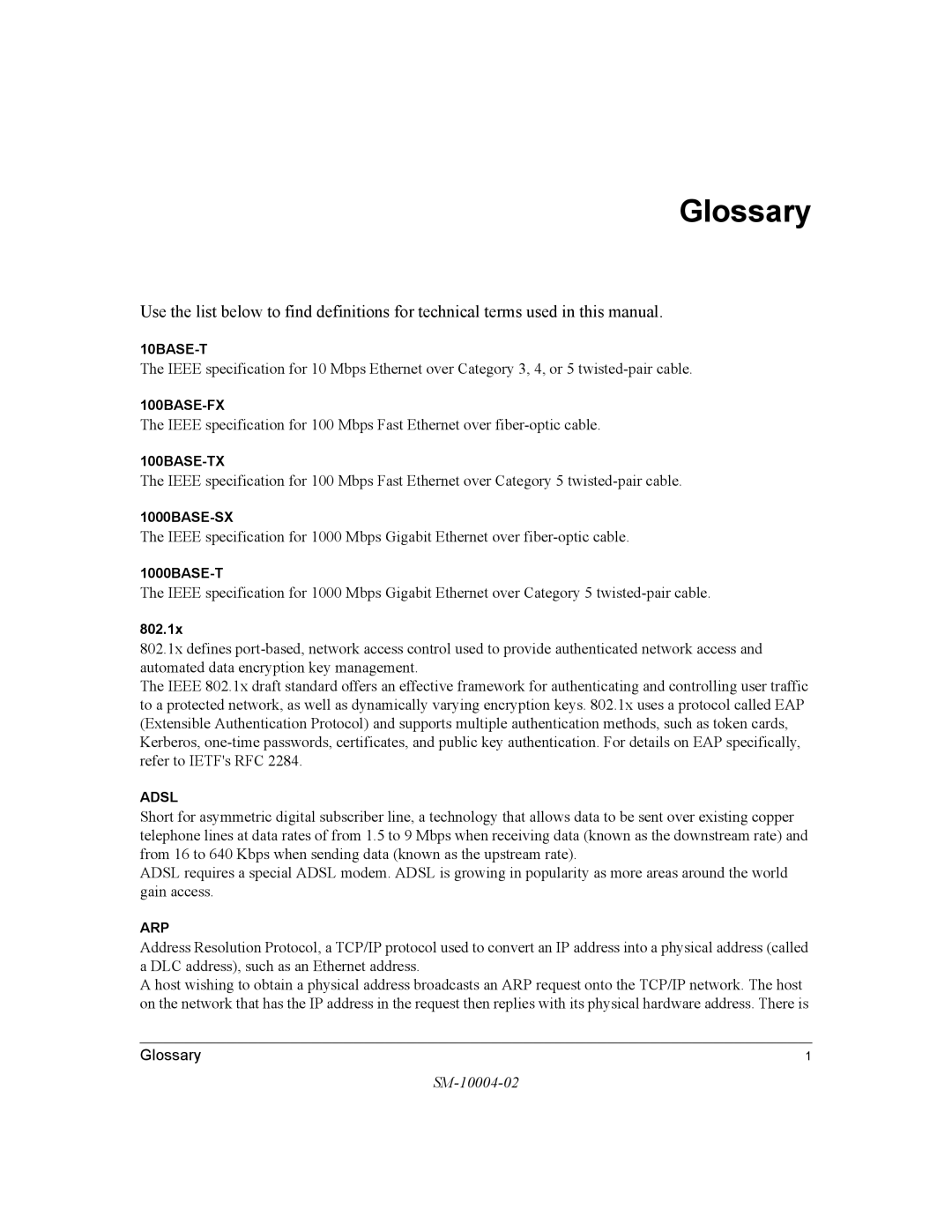Glossary
Use the list below to find definitions for technical terms used in this manual.
The IEEE specification for 10 Mbps Ethernet over Category 3, 4, or 5
The IEEE specification for 100 Mbps Fast Ethernet over
The IEEE specification for 100 Mbps Fast Ethernet over Category 5
The IEEE specification for 1000 Mbps Gigabit Ethernet over
The IEEE specification for 1000 Mbps Gigabit Ethernet over Category 5
802.1x
802.1x defines
The IEEE 802.1x draft standard offers an effective framework for authenticating and controlling user traffic to a protected network, as well as dynamically varying encryption keys. 802.1x uses a protocol called EAP (Extensible Authentication Protocol) and supports multiple authentication methods, such as token cards, Kerberos,
ADSL
Short for asymmetric digital subscriber line, a technology that allows data to be sent over existing copper telephone lines at data rates of from 1.5 to 9 Mbps when receiving data (known as the downstream rate) and from 16 to 640 Kbps when sending data (known as the upstream rate).
ADSL requires a special ADSL modem. ADSL is growing in popularity as more areas around the world gain access.
ARP
Address Resolution Protocol, a TCP/IP protocol used to convert an IP address into a physical address (called a DLC address), such as an Ethernet address.
A host wishing to obtain a physical address broadcasts an ARP request onto the TCP/IP network. The host on the network that has the IP address in the request then replies with its physical hardware address. There is
Glossary | 1 |
